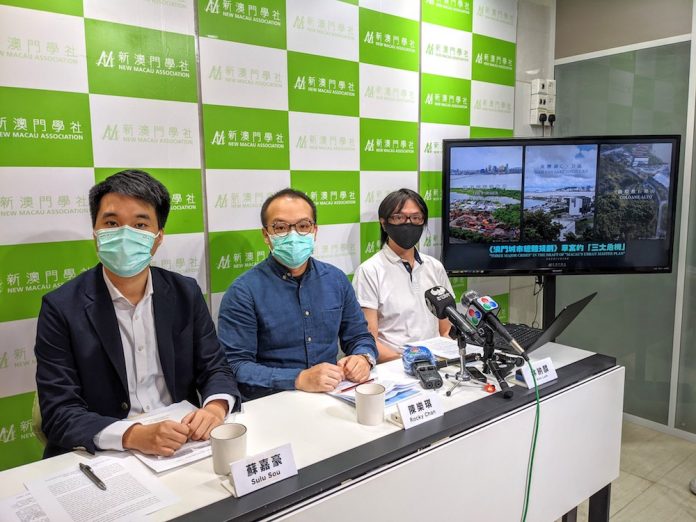The New Macau Association has warned of the irreversible environmental damage that the Urban Master Plan can cause to the SAR, just under a month from the end of the public consultation.
The organization yesterday appealed, in a press conference, “to the public to take the remaining time and to proactively express their opinions before the consultation deadline of November 2, with the aim of putting an end to irreversible damage and protecting the sustainable development of the city for itself and for the next generation”.
The problems pointed out by the association are related to the three main areas of Macau: the peninsula, the island of Taipa and Coloane.
In relation to the peninsula, measures to protect the landscape between the Our Lady of Penha Chapel, the bridge and the sea view “are seriously insufficient and extremely fragile”, said the executive member of the association Lam Lap Lun.
In particular, the association denounces that the new buildings to be built in this area are the same height as the top of the mountain (62.7 meters).
“Buildings should also be strictly limited to the height of the Legislative Assembly building of about 10 to 20 meters to truly protect and shape our unique historical and cultural heritage and the image of the coastal cultural city,” he said.
In addition, in this area of the Macau peninsula, the association calls for more green spaces, cultural and recreational facilities and elements of commercial leisure.
The new Master Plan foresees by 2040 more than 800,000 inhabitants in Macau in 36.8 square kilometers and that housing should occupy 22 per cent of the total land area of Macau, which in 2019 received almost 40 million tourists and is one of the most densely populated cities in the world.
If urban renewal efforts are going to give priority to densely populated areas, the plan for the next 20 years aims according to the Government, to respond to the current mobility requirements of residents and to road pressure on bridges and circulation to that which is the border more competitive with mainland China, the Gongbei Border, the creation of green spaces and the reinforcement of stimuli for economic diversification.
At the same press conference, and as far as the island of Taipa is concerned, the vice-president of the New Macau Association, Rocky Chan, criticized that the “project only proposes to increase some narrow public spaces along the coast of the New Urban Area C and D, which is insufficient to cope with Taipa’s future population growth and leisure needs”.
Regarding Coloane, the vice president of the NMA and the youngest deputy in the territory, Sulu Sou, recalled that the Government proposes to “designate most of the land in Coloane as a non-urbanizable area”.
However, the young legislator criticized that the plan “strangely excludes the 56,592 square meters of Alto de Coloane that the Government has successfully recovered after some hard work”.
“As a result, it is predictable that the nearby mountain will be excavated and that the ecology will be destroyed in order to build low-density housing that serves only the interests of some people,” he denounced.
Sulu Sou also recalled that the Government says that the Master Plan has not yet been concluded and that it is only an outline, but that there is less than a month of public consultation.
“We cannot wait for the end of the public consultation to alert the public,” he concluded.




















